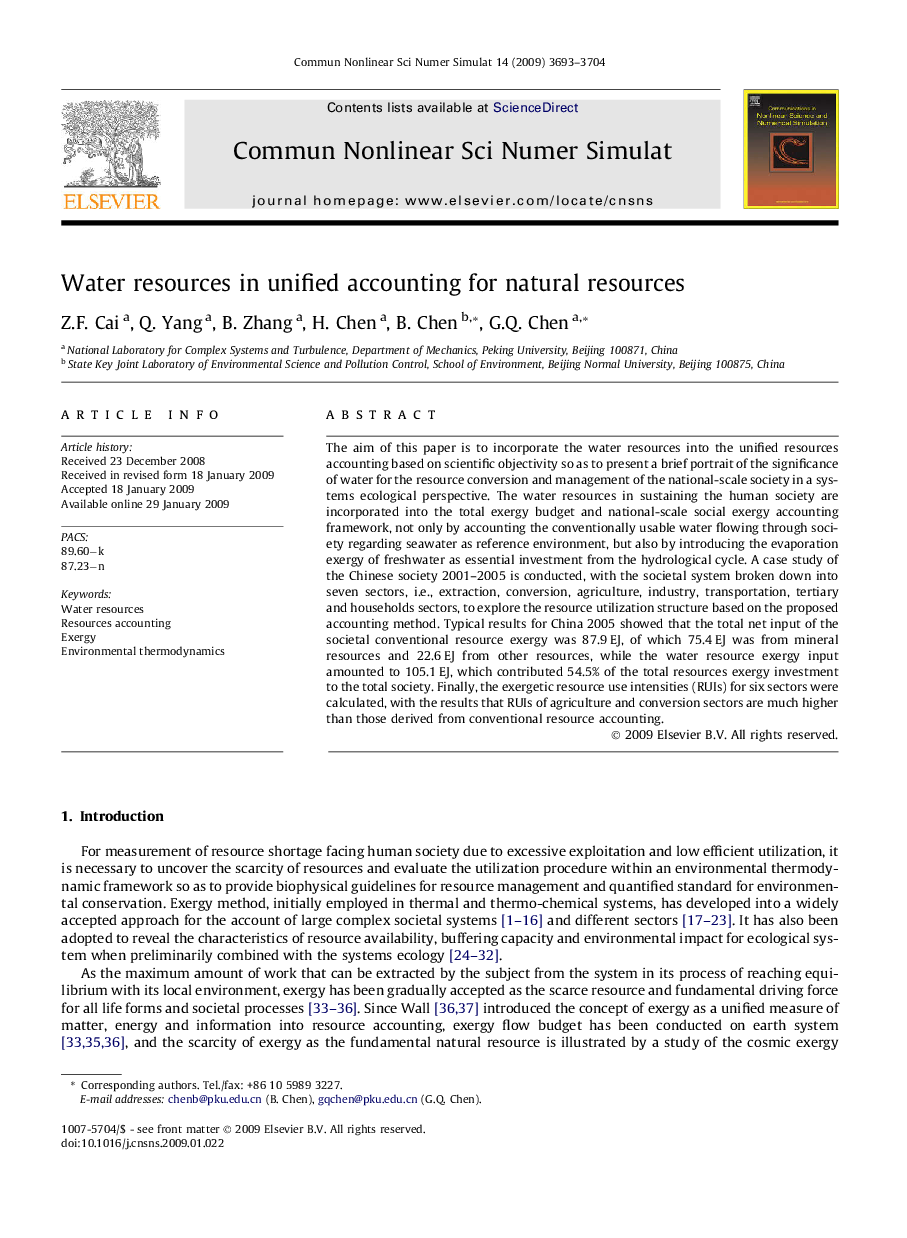| کد مقاله | کد نشریه | سال انتشار | مقاله انگلیسی | نسخه تمام متن |
|---|---|---|---|---|
| 759436 | 1462626 | 2009 | 12 صفحه PDF | دانلود رایگان |

The aim of this paper is to incorporate the water resources into the unified resources accounting based on scientific objectivity so as to present a brief portrait of the significance of water for the resource conversion and management of the national-scale society in a systems ecological perspective. The water resources in sustaining the human society are incorporated into the total exergy budget and national-scale social exergy accounting framework, not only by accounting the conventionally usable water flowing through society regarding seawater as reference environment, but also by introducing the evaporation exergy of freshwater as essential investment from the hydrological cycle. A case study of the Chinese society 2001–2005 is conducted, with the societal system broken down into seven sectors, i.e., extraction, conversion, agriculture, industry, transportation, tertiary and households sectors, to explore the resource utilization structure based on the proposed accounting method. Typical results for China 2005 showed that the total net input of the societal conventional resource exergy was 87.9 EJ, of which 75.4 EJ was from mineral resources and 22.6 EJ from other resources, while the water resource exergy input amounted to 105.1 EJ, which contributed 54.5% of the total resources exergy investment to the total society. Finally, the exergetic resource use intensities (RUIs) for six sectors were calculated, with the results that RUIs of agriculture and conversion sectors are much higher than those derived from conventional resource accounting.
Journal: Communications in Nonlinear Science and Numerical Simulation - Volume 14, Issues 9–10, September–October 2009, Pages 3693–3704